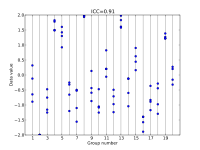
Photo from wikipedia
Ameloblastomas are benign but locally aggressive odontogenic tumors that commonly present as expansile lesions in the tooth-bearing areas. Fine-needle aspiration (FNA) biopsies of ameloblastomas are rare in clinical practice, and… Click to show full abstract
Ameloblastomas are benign but locally aggressive odontogenic tumors that commonly present as expansile lesions in the tooth-bearing areas. Fine-needle aspiration (FNA) biopsies of ameloblastomas are rare in clinical practice, and only a handful of case reports and series have described their cytologic features. We present the case of a 70-year-old woman with a large and disfiguring maxillary sinus soft tissue mass sampled via transcutaneous FNA. Aspirate smears were composed of small clusters of cohesive and monotonous basaloid cells. The accompanying cellblock showed similar clusters of basaloid cells in gland-like, or "adenoid," configurations, eliciting a differential diagnosis that included sinonasal and salivary gland neoplasms. Excisional surgery material was consistent with ameloblastoma with adenoid morphology. Next-generation sequencing (NGS) analysis demonstrated FGFR2 and SMO pathogenic variants. This case exemplifies several uncommonly described features of ameloblastomas in cytology, including cyto-histologic correlation, adenoid morphology, and NGS findings. Awareness of the cytologic features of this neoplasm are important for cytopathologists confronted with maxillary sinus lesions.
Journal Title: Diagnostic cytopathology
Year Published: 2022
Link to full text (if available)
Share on Social Media: Sign Up to like & get
recommendations!